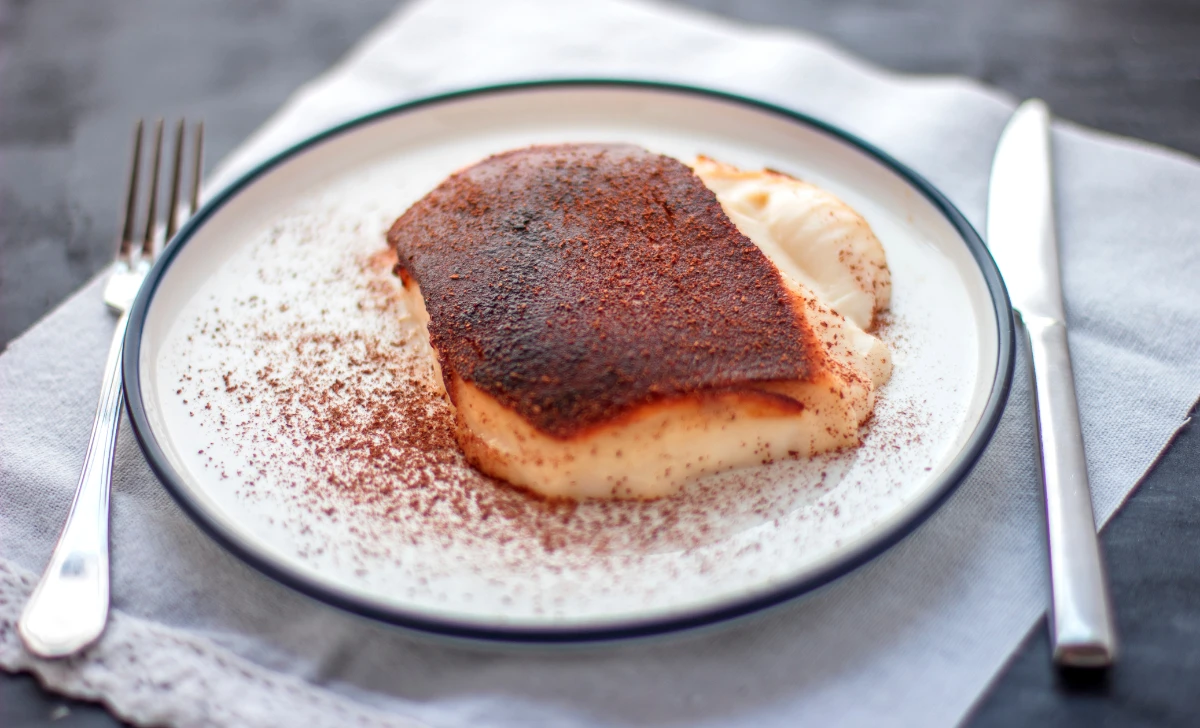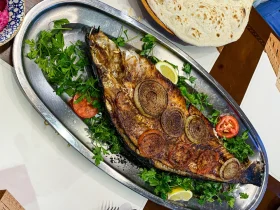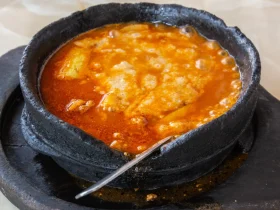Are you ready to embark on a culinary adventure that promises to delight your taste buds and impress your guests? Look no further than the exquisite Kazandibi, a traditional Turkish dessert that combines the perfect blend of sweetness and texture. In this article, we’re diving deep into the art of crafting this delectable treat. From the history behind its name to the step-by-step guide of creating your own Kazandibi masterpiece, we’ve got it all covered!
[ez-toc]
History
The story behind the delectable dessert known as Kazandibi is one that weaves together tradition, innovation, and a touch of culinary serendipity. This iconic Turkish treat, with its caramelized top and velvety custard-like interior, has a history as rich and flavorful as its taste.
Ancient Origins and Culinary Alchemy
The roots of Kazandibi trace back to the heart of Turkey, a land renowned for its vibrant culture and diverse culinary heritage. While the exact origins of the dessert are shrouded in the mists of time, its creation can be attributed to the ingenious minds of Turkish chefs and home cooks.
The essence of Kazandibi’s creation lies in the concept of culinary alchemy – the transformation of simple ingredients into something truly extraordinary. It is said that Kazandibi came into existence as an unintended masterpiece, born from the desire to make the most of every ingredient and create something delightful from what might otherwise be considered culinary “leftovers.”
The Accidental Delight: A Name with a Story
Legend has it that the name “Kazandibi” holds the key to its humble beginnings. The term translates to “bottom of the cauldron” in Turkish, and it is this very imagery that encapsulates the essence of its creation.
In kitchens across Turkey, where large cauldrons were commonly used for cooking, an enchanting accident occurred. As skilled chefs were preparing another traditional Turkish dessert, they noticed a caramelized layer forming at the bottom of the cauldron. Instead of discarding this unexpected creation, they embraced it, recognizing the potential for culinary magic. And thus, Kazandibi was born – a dessert that pays homage to its roots, both in name and in spirit.
From Humble Beginnings to Culinary Icon
From its accidental inception, Kazandibi quickly gained popularity as word spread of its irresistible combination of textures and flavors. What began as a creative solution in the kitchen evolved into a beloved dessert cherished by generations.
As time passed, Kazandibi found its way from kitchens to restaurants, and eventually to homes around the world. Its unique preparation process and unforgettable taste ensured its place not only on Turkish dinner tables but also on menus of esteemed restaurants, where it often serves as a testament to the culinary artistry of Turkish cuisine.
Modern Twist and Enduring Tradition
While Kazandibi’s roots remain firmly planted in tradition, its journey through history has seen the addition of modern twists and variations. Chefs and home cooks alike have embraced the opportunity to put their own spin on this timeless dessert. From cocoa-infused versions that cater to chocolate enthusiasts, to nut-studded renditions that add an enticing crunch, Kazandibi has proven itself to be a canvas for culinary creativity.
Yet, through every twist and turn, the heart and soul of Kazandibi – that delicate balance of creamy custard and luscious caramelization – remain steadfast. It continues to evoke nostalgia and wonder, offering a taste of tradition and a glimpse into the culinary heritage that has shaped Turkish cuisine.
Preserving the Past, One Sweet Bite at a Time
In a world where culinary trends come and go, Kazandibi stands as a testament to the enduring power of tradition and the remarkable ability of food to tell stories and connect generations. With each bite of this sumptuous dessert, we pay homage to the ingenuity of those who came before us, and we savor a piece of history that transcends time and place.
As we relish the delicate flavors and textures of Kazandibi, let us remember the journey it has taken – from the accidental creation in a cauldron’s depths to the cherished centerpiece of celebrations and gatherings. Through its story, we are reminded of the magic that can arise from the simplest of ingredients and the boundless creativity that flows from the heart of every cook.
In every spoonful of Kazandibi, we savor not just a dessert, but a piece of history, a taste of tradition, and a celebration of the culinary heritage that continues to enrich our lives.
Time
| Step | Time |
|---|---|
| Preparing the Rice Flour | 10 minutes |
| Infusing the Milk Mixture | 20 minutes |
| Creating the Caramelization Magic | 15 minutes |
| Layering the Kazandibi | 5 minutes |
| Achieving the Perfect Consistency | 15 minutes |
| Garnishing and Elevating Presentation | 5 minutes |
| Total Cooking and Preparation Time | Approximately 70 minutes |
Remember, patience is key when crafting this culinary masterpiece. While the clock is ticking, each moment is a step toward creating a dessert that embodies the perfect balance of flavors and textures. So, embrace the process, savor the journey, and prepare to indulge in the sweet rewards of your labor.
Ingredients
| Ingredients | Quantity |
|---|---|
| Rice flour | 1/4 cup |
| Milk | 1 1/2 cups |
| Sugar | 1/2 cup |
| Vanilla extract | 1 teaspoon |
| Butter | 2 tablespoons |
| Lemon zest | 1/2 teaspoon |
This carefully curated list of ingredients is the foundation of your Kazandibi adventure. From the subtle nuttiness of rice flour to the aromatic touch of vanilla and lemon zest, each element contributes to the symphony of flavors that make Kazandibi an unforgettable dessert. Enjoy the process of bringing these ingredients to life and savoring the results with your lucky dining companion.
Directions
Step 1: Preparing the Rice Flour
Time: 10 minutes
- In a dry skillet over medium heat, add the rice flour.
- Toast the rice flour, stirring constantly, until it turns a delicate shade of golden brown. This should take about 7-8 minutes.
- Remove the skillet from the heat and transfer the toasted rice flour to a bowl. Set aside to cool.
Step 2: Infusing the Milk Mixture
Time: 20 minutes
- In a medium-sized pot, combine the milk, sugar, vanilla extract, and lemon zest.
- Place the pot over medium-low heat and gently simmer the mixture, stirring occasionally, until it is warmed through and the flavors have melded. This should take approximately 15-18 minutes.
- Remove the pot from the heat and set aside.
Step 3: Creating the Caramelization Magic
Time: 15 minutes
- In a wide-bottomed pan, melt the butter over medium heat.
- Sprinkle a generous layer of sugar over the melted butter.
- Allow the sugar to melt and caramelize, stirring occasionally. This process should take about 5-7 minutes, resulting in a rich golden-brown caramel.
Step 4: Layering the Kazandibi
Time: 5 minutes
- Carefully pour a thin layer of the cooled toasted rice flour into the pan with the caramelized sugar.
- Gently spread the rice flour to form an even layer, creating the base of your Kazandibi.
Step 5: Achieving the Perfect Consistency
Time: 15 minutes
- Slowly ladle the prepared milk mixture over the rice flour base.
- Allow the dessert to cook over low heat, without stirring, until the mixture thickens and achieves a custard-like consistency. This process should take around 10-12 minutes.
Step 6: Garnishing and Elevating Presentation
Time: 5 minutes
- Once the Kazandibi has reached the desired consistency, remove the pan from the heat.
- Optionally, garnish the surface with finely chopped pistachios, a sprinkle of cinnamon, or a drizzle of honey for an added touch of elegance.
Step 7: Serving and Savoring
- Allow the Kazandibi to cool slightly before cutting it into desired portions.
- Serve the warm or at room temperature, allowing the flavors to fully develop.
With each step completed, you’re one closer to experiencing the magic of Kazandibi. From the toasting of rice flour to the artful caramelization and creamy custard creation, you’ve crafted a dessert that’s as delightful to make as it is to enjoy. Share the love, indulge in every bite, and relish the sweetness that comes from mastering this Turkish treasure.
Equipment Required
Nutrition Information
| Nutrition Facts | Per Serving |
|---|---|
| Serving Size | 1 piece (approx. 1/4 of recipe) |
| Calories | 220 |
| Total Fat | 8g |
| – Saturated Fat | 5g |
| Cholesterol | 25mg |
| Sodium | 75mg |
| Total Carbohydrates | 34g |
| – Dietary Fiber | 0g |
| – Sugars | 24g |
| Protein | 4g |
Percent Daily Values are based on a 2,000-calorie diet. Your daily values may be higher or lower depending on your calorie needs.
This nutritional information provides a snapshot of the key components in each serving of Kazandibi. As you savor this delectable dessert, you can do so with an understanding of its nutritional impact. Enjoy responsibly and let the exquisite flavors take center stage!
Tips
- Temperature Matters: Keep a watchful eye on the heat levels throughout the caramelization process. Too high a heat can lead to burning, while too low can hinder the caramelization magic.
- Texture Tidbits: For a smoother custard, consider straining the milk mixture before ladling it onto the rice flour base. This step ensures a velvety consistency.
- Zest Zing: The lemon zest adds a delightful citrusy aroma. Adjust the amount to your taste – a little zest goes a long way.
- Butter Up: Don’t skimp on butter when caramelizing. It plays a crucial role in creating that rich caramel color and flavor.
- Practice Patience: Achieving the perfect caramelization and custard consistency requires patience. Embrace the process and savor the anticipation.
Pros & Cons
| Pros | Cons |
|---|---|
| ✔️ Rich and Creamy Texture | ❌ Requires Precise Temperature Control |
| ✔️ Perfect Blend of Sweetness | ❌ Time-Intensive Preparation |
| ✔️ Customizable with Variations | ❌ Requires Patience and Attention to Detail |
| ✔️ Blends Tradition with Creativity | ❌ High Sugar Content |
| ✔️ Delights Taste Buds and Guests | ❌ Potential for Overcooking if Not Watched Closely |
Conclusion
As we reach the final chapter of our culinary adventure, the story of Kazandibi unfolds into a tale of tradition, creativity, and pure indulgence. From its accidental origins to its status as a Turkish treasure, Kazandibi has proven to be more than just a dessert – it’s a journey that beckons you to immerse yourself in its sweet embrace.
With each carefully crafted layer, every nuanced infusion of flavor, and the artful dance of caramelization, Kazandibi invites you to partake in a symphony of tastes and textures that awaken the senses. The result? A dessert that embodies the essence of culinary artistry, a masterpiece that reflects the heart and soul of Turkish culture.
As you gather the ingredients, follow the steps, and witness the transformation of simple components into a masterpiece that rivals the cauldron’s accidental creation, you’re not just preparing a dessert – you’re embracing a tradition, capturing a moment of culinary magic, and sharing the love that goes into every spoonful.
So, don your apron, ignite your culinary curiosity, and embark on this flavorful journey. Whether you’re a seasoned chef or a novice in the kitchen, Kazandibi promises an experience that transcends the ordinary and delivers pure delight to your taste buds.
Invite loved ones to the table, share the joy of savoring the creation, and bask in the glow of accomplishment as you enjoy the fruits of your labor. Kazandibi isn’t just a dessert; it’s a celebration of the art of cooking, a tribute to the past, and a testament to the joy of sharing.
With a heart full of anticipation, a spoon in hand, and the promise of a remarkable taste sensation before you, there’s only one thing left to do – let the sweet magic of Kazandibi unfold on your palate, and savor the journey that culminates in a culinary masterpiece that’s as delightful to make as it is to savor. Go ahead, take that first bite – your taste buds will thank you!
Facts
- Fact 1: A Sweet Accident Birthed Kazandibi’s Name! 🌟
- Legend has it that Kazandibi got its name from a happy kitchen mishap. Translating to “bottom of the cauldron” in Turkish, this dessert was born when chefs discovered a scrumptious layer forming at the cauldron’s base. A sweet accident turned into a treasured treat!
- Fact 2: A Culinary Evolution with Ottoman Roots 🌍
- Kazandibi’s roots stretch back to the Ottoman Empire, where it was a favorite among the royals and commoners alike. This dessert has gracefully transitioned through history, uniting tradition with modern twists to create a flavorful legacy that transcends time.
- Fact 3: A Symphony of Textures and Flavors 🎵
- Kazandibi is a true maestro of taste. Its harmonious composition brings together the velvety custard, the luscious caramelization, and the nutty undertones of toasted rice flour. Each bite is a symphony of textures and flavors that dance on your palate.
- Fact 4: Artistry on Your Plate 🎨
- Crafting Kazandibi isn’t just cooking – it’s an art form! The delicate balance of caramelization requires precision and patience. As you master the technique, you become a culinary artist, painting a canvas of flavor that’s as beautiful to admire as it is to devour.
- Fact 5: Kazandibi: From Kitchen to Celebration 🎈
- Kazandibi isn’t just a dessert; it’s a celebration waiting to happen. From family gatherings to festive feasts, this Turkish treasure has the power to elevate any occasion. It’s a dessert that brings joy, laughter, and the joy of sharing to every table it graces.
FAQ’s
Can I use a different type of flour for Kazandibi?
Stick with rice flour for the authentic texture and flavor. Other flours may alter the final result.
Can I substitute butter with a healthier option?
While butter contributes to the caramelization, you can experiment with a light butter or a dairy-free alternative like coconut oil.
Is there a way to reduce the sugar content without compromising taste?
You can reduce the sugar slightly, but keep in mind that caramelization plays a vital role in Kazandibi’s character.
Can I make Kazandibi ahead of time and refrigerate it?
Absolutely! Prepare it a day ahead and store it in the refrigerator. Allow it to come to room temperature before serving.
How can I achieve a perfectly smooth custard consistency?
Straining the milk mixture before pouring it over the rice flour can help achieve a smoother texture.
Is Kazandibi gluten-free?
Yes, Kazandibi is naturally gluten-free as it uses rice flour instead of wheat flour.
What’s the best way to serve Kazandibi?
Serve it warm or at room temperature. Pair it with a cup of Turkish tea for an authentic experience.
Can I use non-dairy milk alternatives for this recipe?
Absolutely! Experiment with almond milk or coconut milk for a unique twist.
Why does the rice flour need to be toasted?
Toasting enhances the flavor profile of the dessert, lending a delightful nuttiness.
Can I freeze Kazandibi for future enjoyment?
While it’s best enjoyed fresh, freezing may alter the texture. If you choose to freeze, thaw slowly in the refrigerator before consuming.












Leave a Review